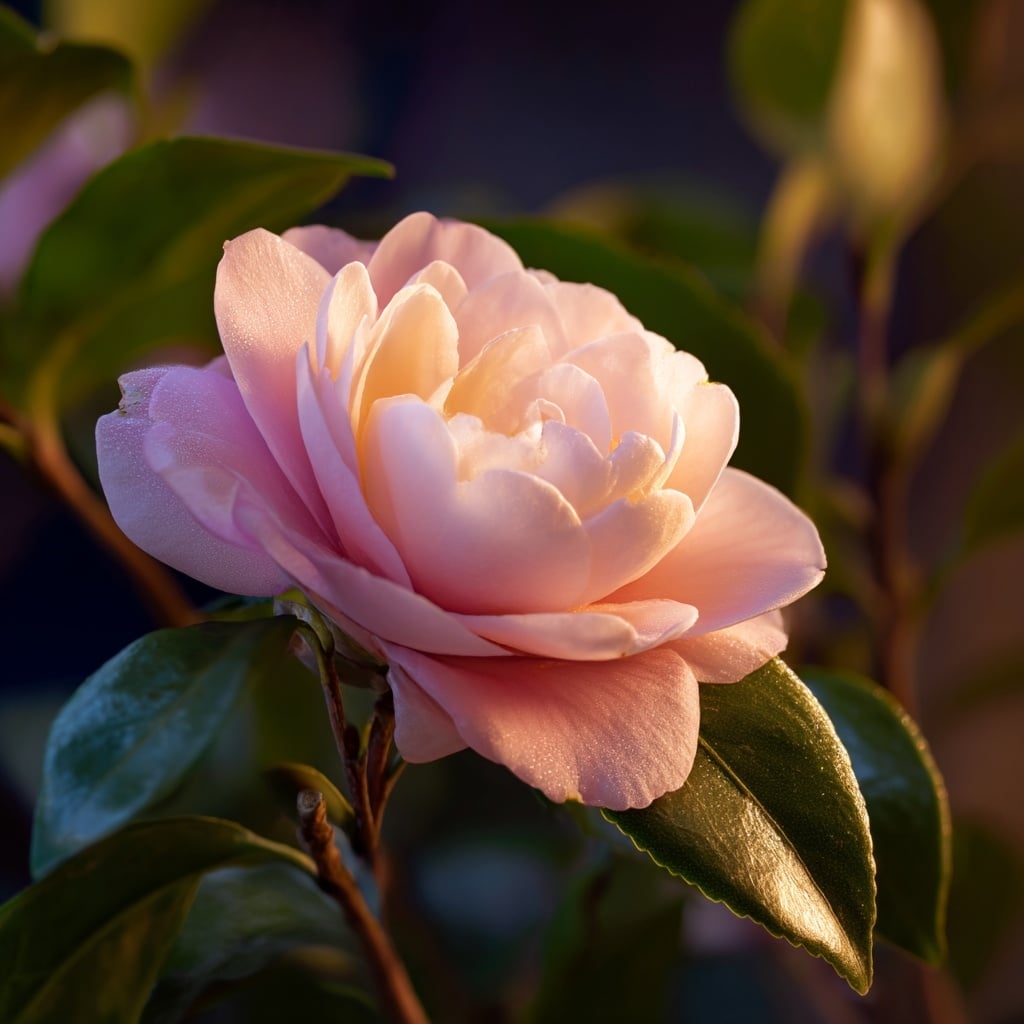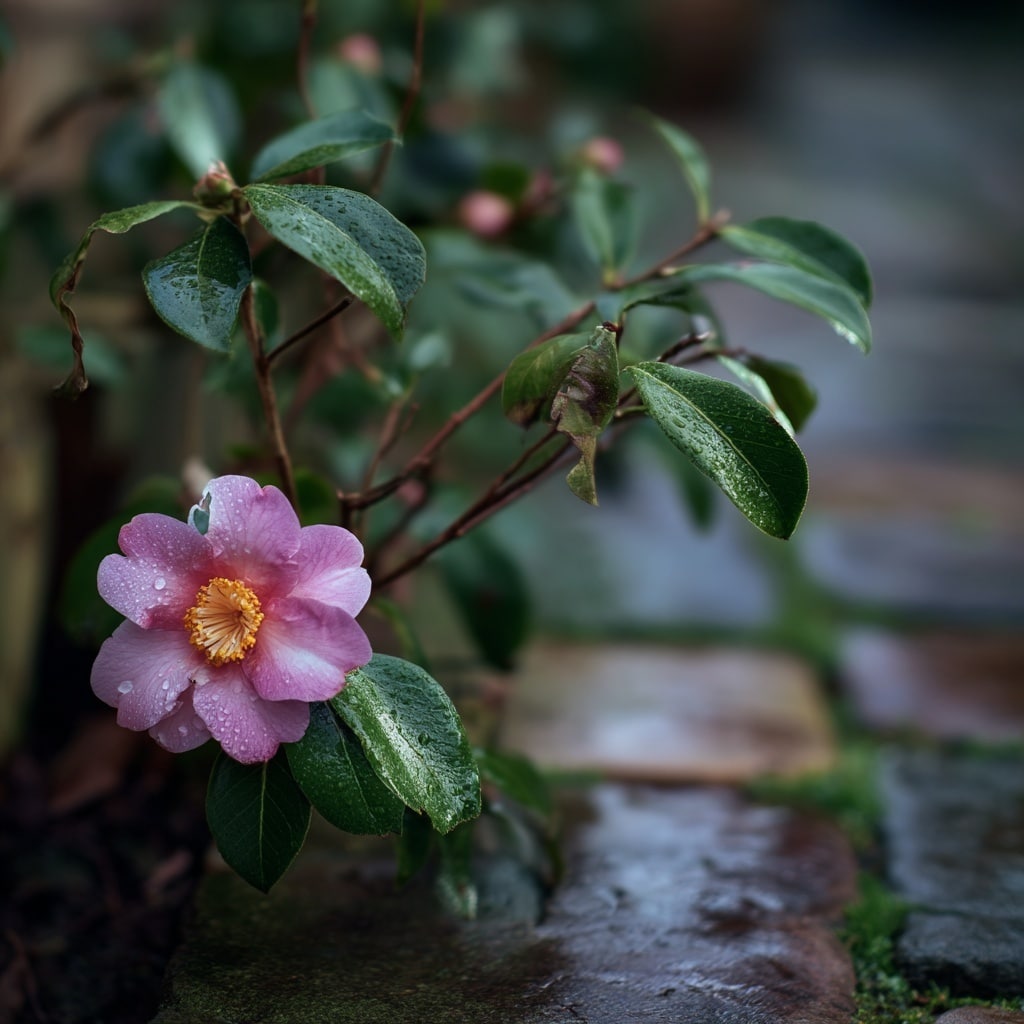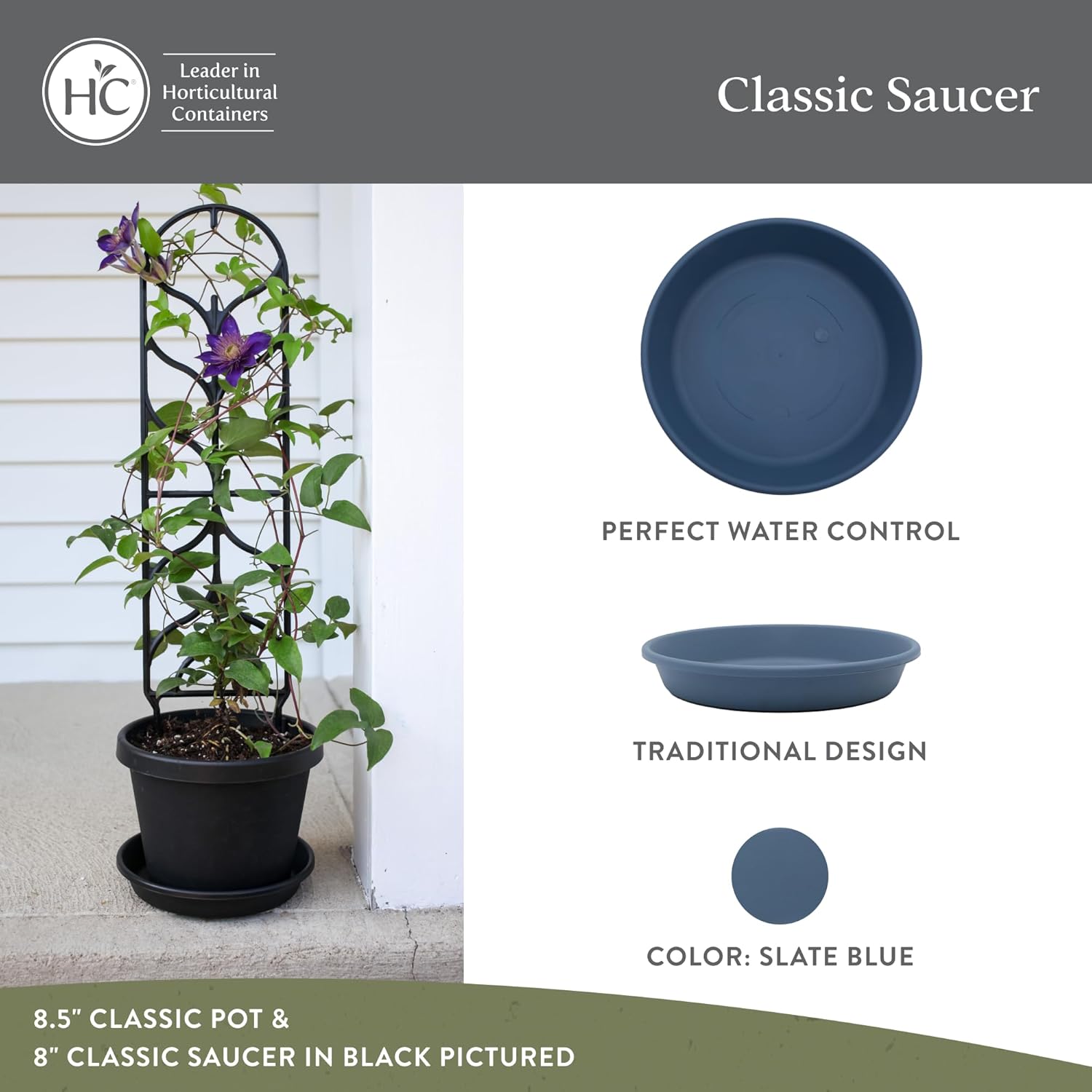Camellia is a flower that perfectly blends elegance, resilience, and timeless charm. Native to Asia—particularly Japan, China, and Korea—this stunning bloom has been cherished for centuries not only for its beauty but also for its deep meanings. From love and admiration to purity and devotion, the Camellia carries rich symbolism that makes it one of the most beloved flowers in the world.
Often found in gardens and tea plantations, Camellias bloom in graceful layers of petals, symbolizing perfection and lasting affection. Whether given as a gift, used in ceremonies, or admired in a garden, the Camellia represents a heartfelt connection between nature and emotion.
Let’s uncover the fascinating history, symbolism, and everyday uses of this remarkable flower—and see why the Camellia remains a timeless symbol of beauty and love.
Table of Contents
Table of Contents
1. The History of the Camellia
The Camellia has a long and fascinating history that stretches across centuries and continents. Originating in the lush forests of East Asia, it was first cultivated in China, where it symbolized purity, longevity, and the beauty of a humble heart. From there, the flower made its way to Japan and Korea, where it became a treasured part of cultural ceremonies and artistic traditions.
By the 18th century, European explorers brought the Camellia to the West, where it quickly became a symbol of refinement and class. Aristocrats adored its flawless symmetry and glossy green leaves, often displaying the blooms in formal gardens and drawing rooms. In Victorian times, gifting a Camellia was seen as an elegant gesture of admiration and affection—each color carrying its own secret message of emotion.
Today, the Camellia continues to hold a special place in gardens around the world. Its enduring beauty and delicate strength make it not just a flower, but a living expression of love, endurance, and grace.
2. Symbolism of the Camellia
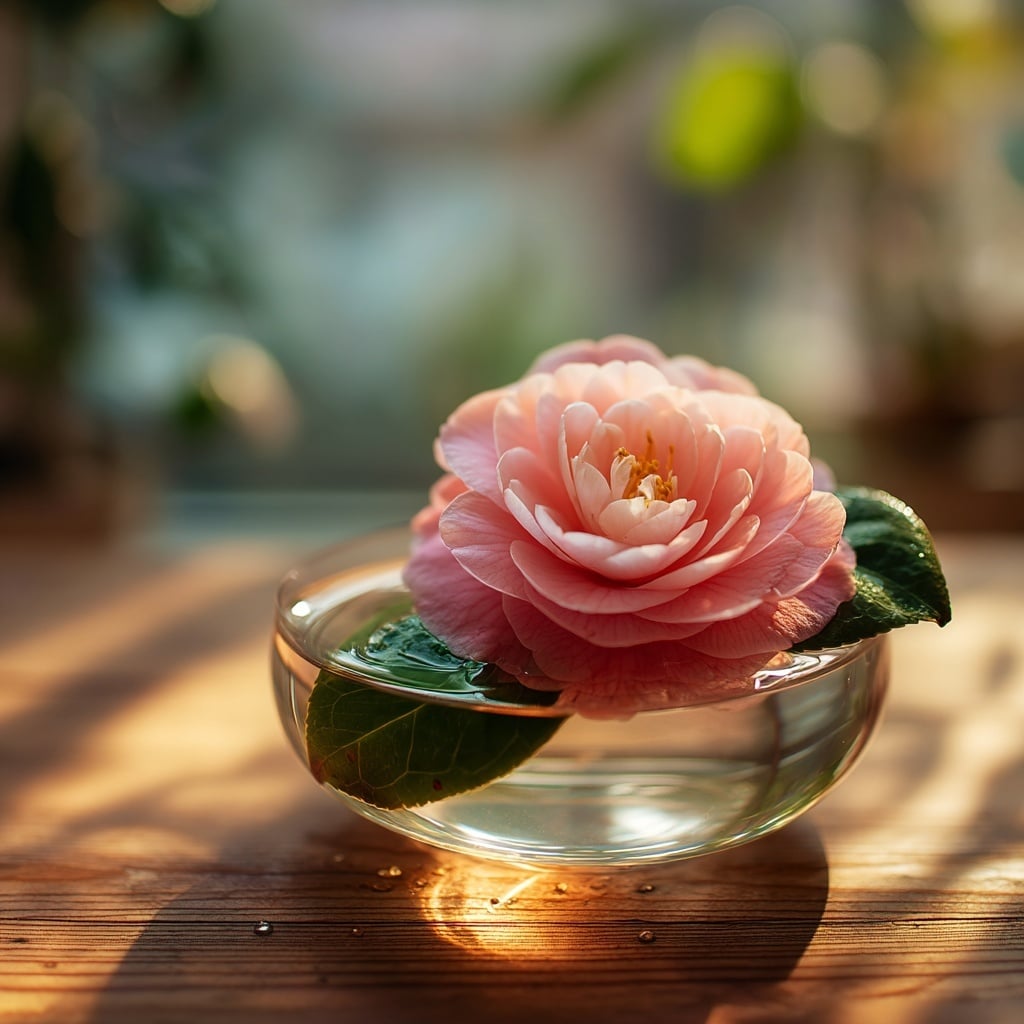
The Camellia is more than just a beautiful bloom—it’s a flower steeped in symbolism, carrying deep emotional and cultural meanings. Each petal tells a story of love, admiration, and respect, making it one of the most meaningful flowers you can give or grow.
At its heart, the Camellia symbolizes perfect love and devotion. Its balanced petals and symmetrical shape are seen as representations of harmony between partners or close friends. In many Asian cultures, it’s considered a sacred flower of faithfulness and purity, often exchanged between lovers as a promise of eternal affection.
In the West, the Camellia is often associated with refinement, beauty, and gratitude. The Victorians used it as a secret message—white for admiration, pink for longing, and red for deep love. The flower’s elegant form and year-round green leaves also make it a powerful symbol of longevity and perseverance, showing that true beauty endures through time and change.
Whether used in weddings, art, or gardens, the Camellia continues to represent love in its purest and most enduring form.
3. Meanings of Camellia by Color
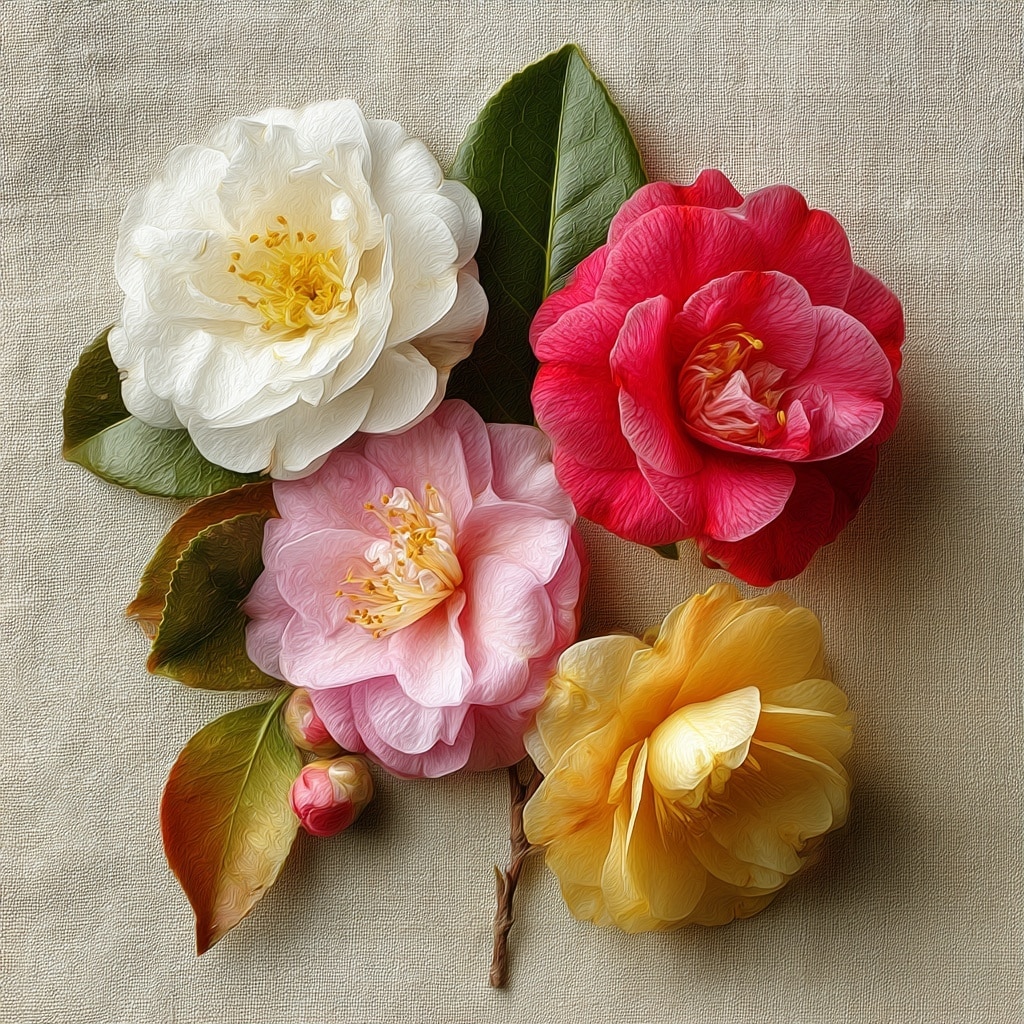
Each shade of the Camellia tells its own story, carrying a unique message that deepens the flower’s beauty and significance. The color of a Camellia can express emotions ranging from romantic love to admiration and purity.
White Camellia
The white Camellia stands for purity, innocence, and admiration. It’s often used in weddings and formal occasions as a symbol of new beginnings and true devotion. Giving a white Camellia expresses respect and a pure heart toward someone you deeply value.
Red Camellia
A red Camellia is the ultimate flower of deep love and passion. Much like red roses, it conveys desire and strong affection. In relationships, red Camellias are often gifted to express, “You are the love of my life,” making them a perfect choice for anniversaries and romantic gestures.
Pink Camellia
The pink Camellia embodies longing, admiration, and gentle affection. It’s often chosen to show gratitude or affection toward someone cherished but not necessarily romantic. Many associate pink Camellias with feminine charm and heartfelt appreciation.
Yellow Camellia
Although less common, the yellow Camellia is a symbol of joy, friendship, and positivity. It’s often gifted to brighten someone’s day or to celebrate a new chapter in life. This rare color variation reminds us that happiness can bloom in unexpected places.
Each hue of the Camellia adds a layer of meaning, allowing this elegant flower to speak the language of the heart in a way few other blooms can.
4. Cultural and Spiritual Significance of the Camellia
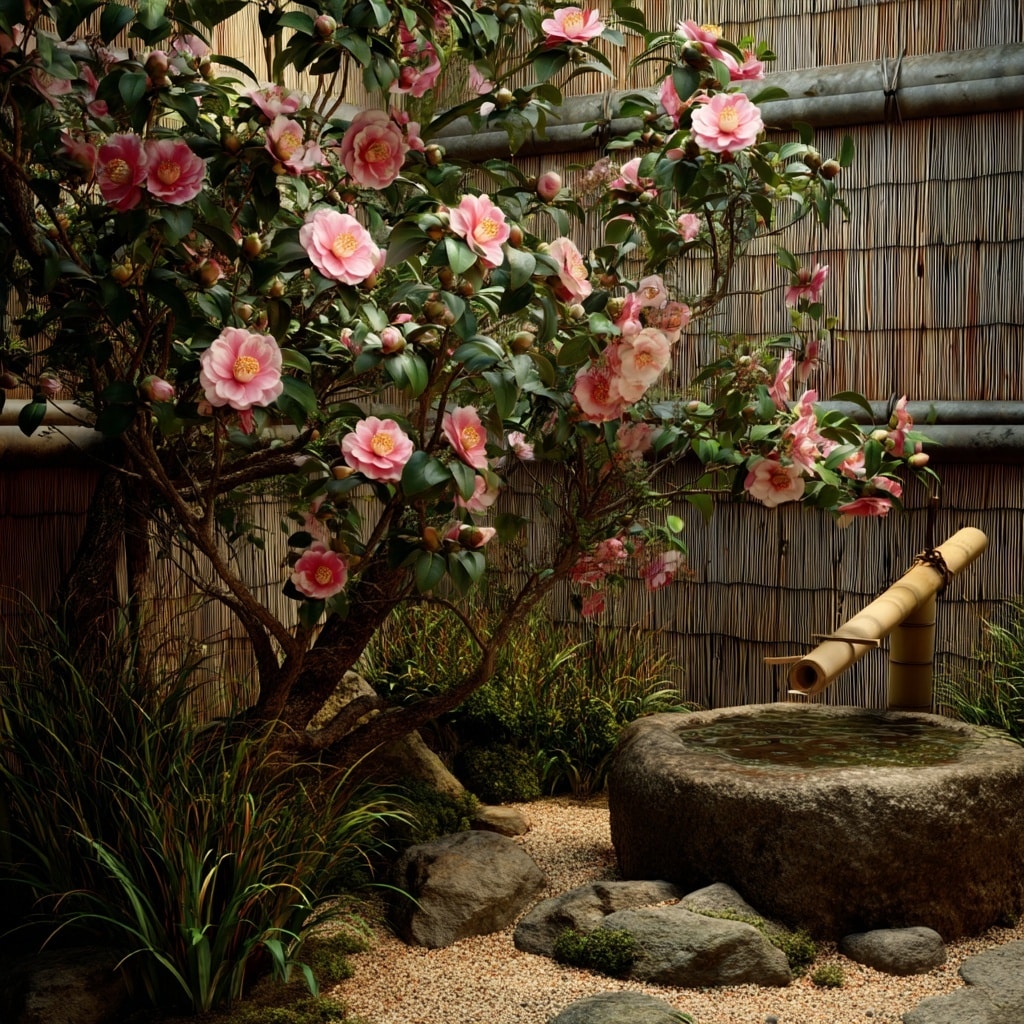
The Camellia has long held a cherished place in both Eastern and Western cultures, symbolizing not only love and purity but also spiritual balance and respect. Its significance varies across traditions, yet it always carries a sense of beauty, humility, and devotion.
In Eastern Culture
In China, the Camellia is celebrated as a symbol of eternal love and harmony. The overlapping petals and sepals are said to represent a couple—bound together, inseparable even in spirit. Unlike most flowers, both petals and calyx fall together when the bloom fades, a beautiful reminder of everlasting union.
In Japan, known as Tsubaki, the Camellia symbolizes divine beauty, humility, and renewal. It has deep connections to samurai culture, representing honor and the fleeting nature of life. The red Camellia, in particular, was worn by warriors as a sign of respect and courage.
In Western Culture
In the West, the Camellia became a favorite among nobles and artists. It represented refined beauty, admiration, and perfection, often appearing in art, literature, and fashion. Coco Chanel famously used the white Camellia as her signature motif, associating it with elegance and simplicity.
Spiritual and Tattoo Symbolism
Spiritually, the Camellia is linked to balance, selflessness, and the divine feminine. Its symmetrical form reflects harmony between body and soul. In tattoo symbolism, a Camellia design often signifies devotion, passion, or the remembrance of a loved one, serving as a lasting tribute to beauty and resilience.
The universal appeal of the Camellia lies in its quiet strength—it’s a reminder that true beauty shines brightest through grace and balance.
5. Practical and Everyday Uses of the Camellia

Beyond its symbolic charm, the Camellia is a remarkably versatile plant with practical uses that span beauty, wellness, and garden design. Its vibrant blooms and glossy leaves make it an exceptional choice for both ornamental and functional purposes.
Ornamental Beauty
The Camellia is a garden favorite for good reason. With its lush foliage and long blooming season, it adds elegance to landscapes, walkways, and shaded patios. Many gardeners grow Camellias as focal points or hedges, enjoying their showy blossoms from winter through spring. Their timeless look also makes them a popular flower for bouquets, centerpieces, and wedding decorations.
Tea and Skincare Uses
One of the most famous species, Camellia sinensis, is the source of green, black, and white tea. Its leaves are rich in antioxidants that promote health and vitality. Another variety, Camellia japonica, produces seeds used to make Camellia oil (Tsubaki oil)—a cherished beauty product in Asia known for nourishing hair and skin.
Medicinal and Cultural Uses
In traditional medicine, Camellia extracts are valued for their soothing and anti-inflammatory properties. They’ve been used to calm irritated skin and improve complexion. The flower also appears in festivals and rituals as a symbol of peace and renewal, reminding people to appreciate life’s quiet moments of beauty.
Whether enhancing a garden, brewed in a cup, or applied to the skin, the Camellia proves that nature’s elegance often comes with surprising benefits.
6. Growing and Care Tips for Camellia
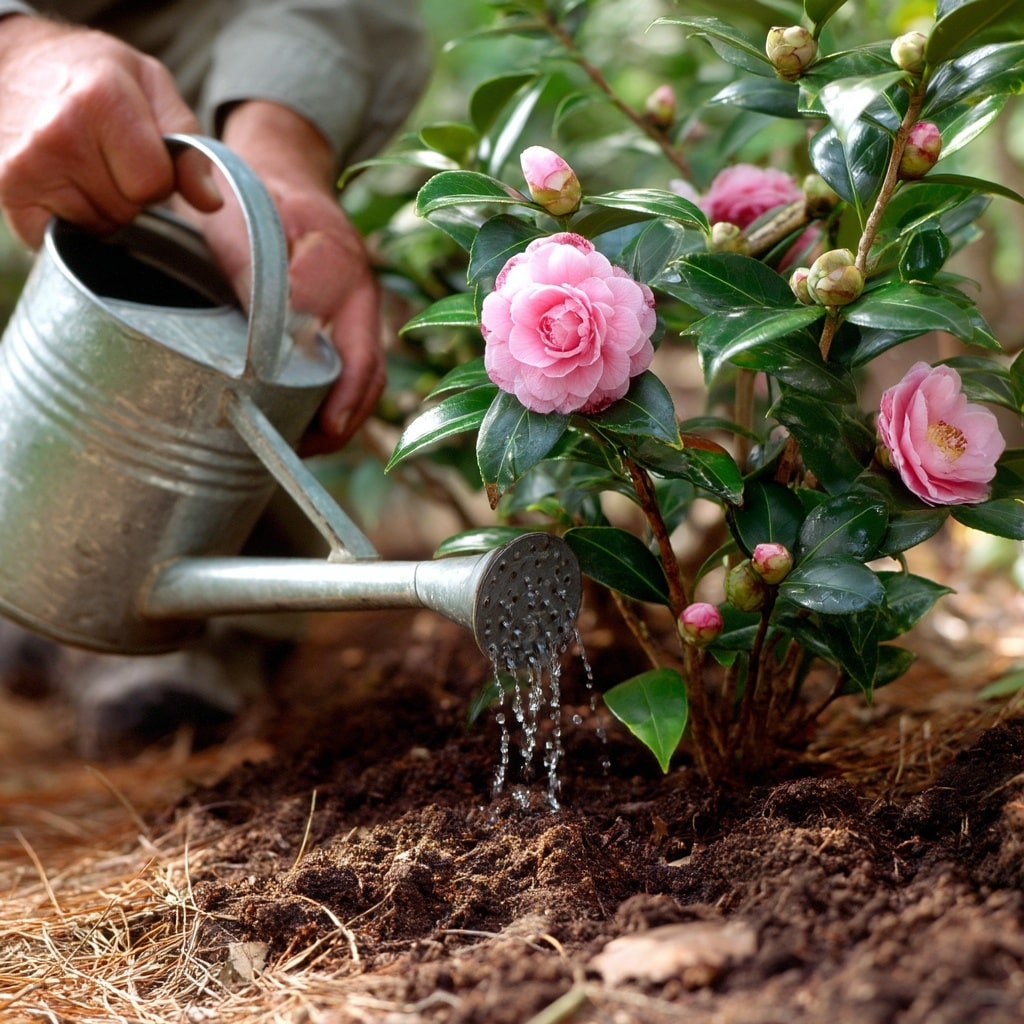
The Camellia is not only admired for its stunning blooms but also loved by gardeners for being relatively easy to care for once established. With the right conditions, it can reward you with years of vibrant flowers and lush greenery.
Ideal Growing Conditions
Camellias thrive in partially shaded areas with protection from harsh afternoon sunlight. They prefer slightly acidic, well-draining soil—similar to what azaleas and rhododendrons enjoy. When planting, choose a spot where the soil stays moist but never soggy, as excessive water can lead to root rot.
Watering and Feeding
Keep the soil consistently damp, especially during dry periods. Deep watering once or twice a week encourages healthy root growth. During the growing season, use a fertilizer formulated for acid-loving plants to promote glossy leaves and abundant blooms.
Pruning and Maintenance
After flowering, lightly prune your Camellia to shape the plant and remove any dead or weak branches. This helps air circulation and stimulates new growth. Applying a layer of organic mulch—such as pine bark or compost—helps retain soil moisture and regulate temperature.
Pest and Disease Control
Camellias are generally resilient but can sometimes attract aphids or scale insects. A gentle spray of soapy water or neem oil usually keeps these pests under control. Always ensure good airflow and avoid overhead watering to prevent leaf spot or mold.
With a bit of attention and care, your Camellia can flourish year after year—transforming your garden into a serene haven filled with color and fragrance.
7. Conclusion

The Camellia is a timeless symbol of love, beauty, and devotion—a flower that bridges cultures and generations. Its elegant form and deep meanings have made it a favorite in gardens, homes, and hearts around the world. From its ancient roots in Asia to its place in modern design and wellness, the Camellia continues to captivate with its grace and endurance.
Whether you plant it for its symbolism, its radiant flowers, or its practical benefits, the Camellia stands as a reminder that true beauty blooms through patience, balance, and care.

